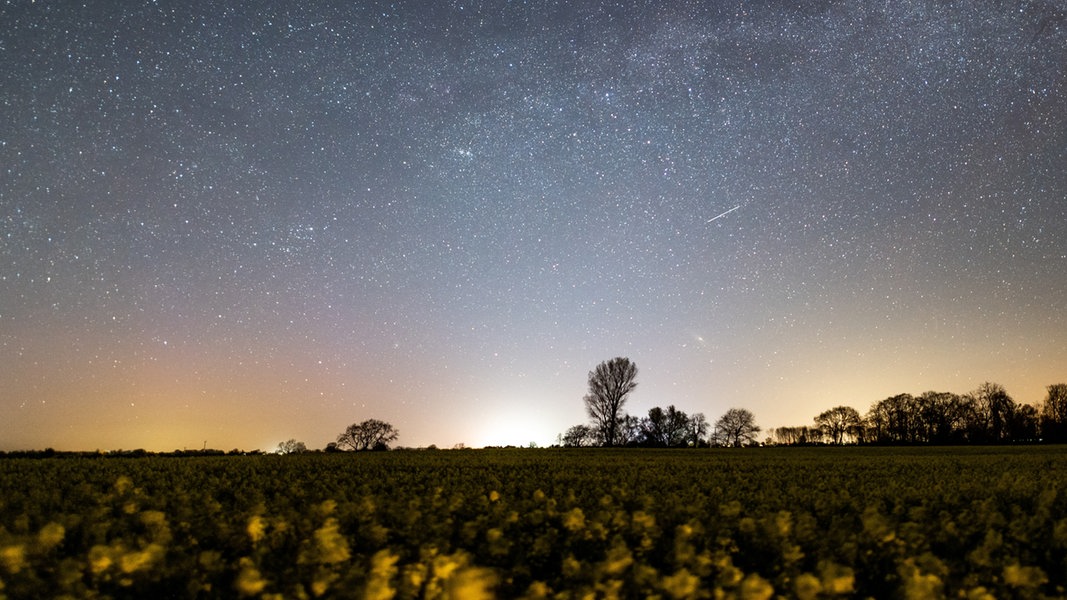As of: April 18, 2024 9:45 a.m
Every year in the second half of April, the Lyrid shooting star shower appears in the night sky. It is at its peak on April 23rd. However, the bright moon obscures the view.
The first shooting stars can be observed from April 16th. On April 23rd, just one day before the full moon, the meteor shower will reach its maximum, said Dr. Björn Voss, director of the planetarium in Hamburg. “Therefore, the bright light of our satellite enormously disrupts the observation of the fast shooting stars.”
Lyrids are dust particles from Comet Thatcher
If you want to experience the shooting stars, you should search the night sky before April 23rd if possible. If visibility is good in dark places, a few meteors could appear in the sky – ten to twenty meteors per hour around the peak. The Lyrids are tiny particles of the comet “Thatcher C/1861 G1”, whose orbit crosses the Earth every year. When such a dust particle burns up in the Earth’s atmosphere, the typical glowing tail of a shooting star is created.
Named after the constellation Lyra
The Lyrids take their name from the constellation of the Lyre, Lyra in Latin. They seem to stream from the direction of this constellation, whose best-known and brightest star is Vega. In the evening hours before midnight, the Lyra is relatively low in the April sky, which makes viewing the meteors even more difficult. The Perseids in August each year offer better chances of seeing shooting stars. Dozens of meteors then flash in the starry sky.
Good observation locations in the north
Shooting stars are particularly easy to observe in rural regions where there are hardly any artificial light sources. Climbing hills or mountains also offers advantages: the higher observers position themselves, the larger the section of sky that is visible.
In large cities, however, light pollution and scattered light from street lighting, port facilities or airports make observation more difficult. When observing, stargazers should also avoid looking at light sources such as smartphones. The human eye needs about half an hour to optimally adapt to seeing in the dark
A selection of northern German places and regions that offer good conditions for observing the night sky:
Elbe floodplain (Lower Saxony, Schleswig-Holstein, Mecklenburg-Western Pomerania)Heath with Wilseder Berg (Lower Saxony)Elevations in the Harz (Lower Saxony)Westerhever (Schleswig-Holstein)West part of the island of Fehmarn (Schleswig-Holstein)Island of Pellworm (Schleswig-Holstein)Island Spiekeroog (Lower Saxony)Klützer Winkel and the surrounding area (Mecklenburg-Western Pomerania)Region around the lake district (Mecklenburg-Western Pomerania), in particular the Nossentiner/Schwinzer Heide star park
This topic in the program:
NDR 1 Lower Saxony | April 16, 2024 | 11:00 o’clock
